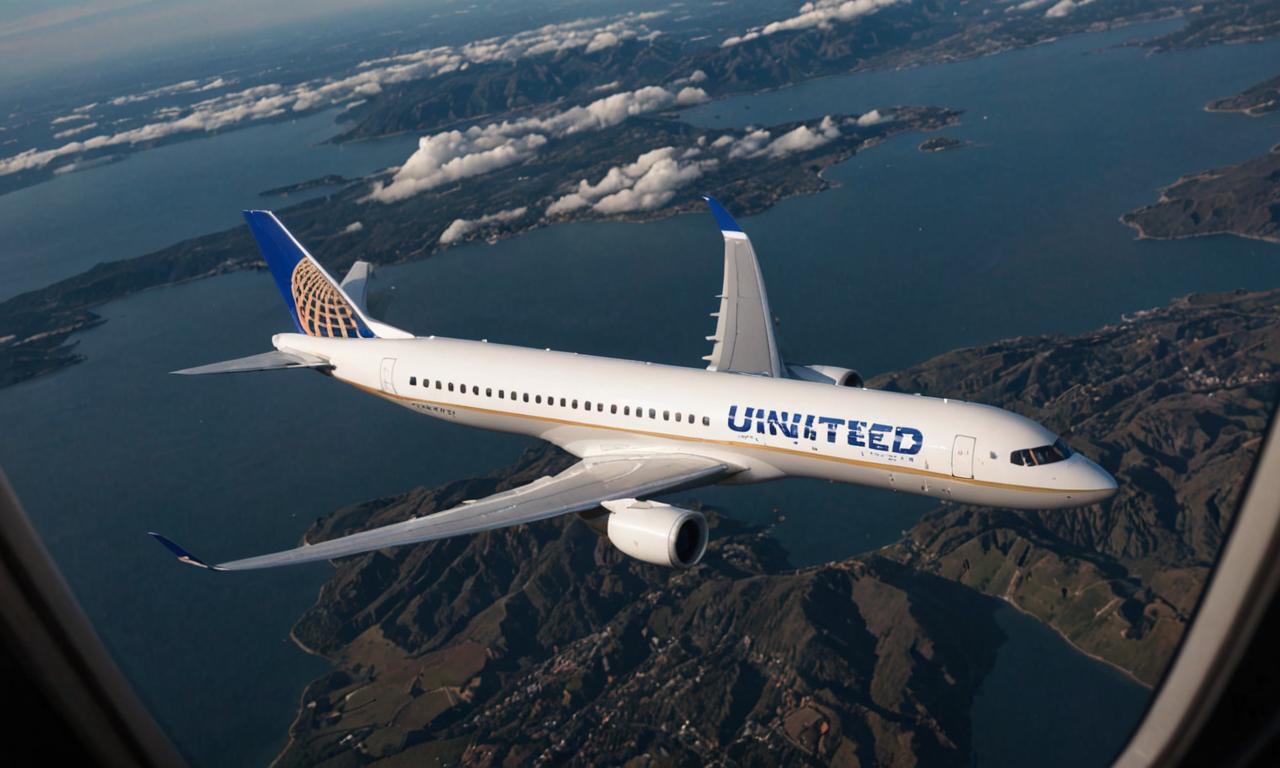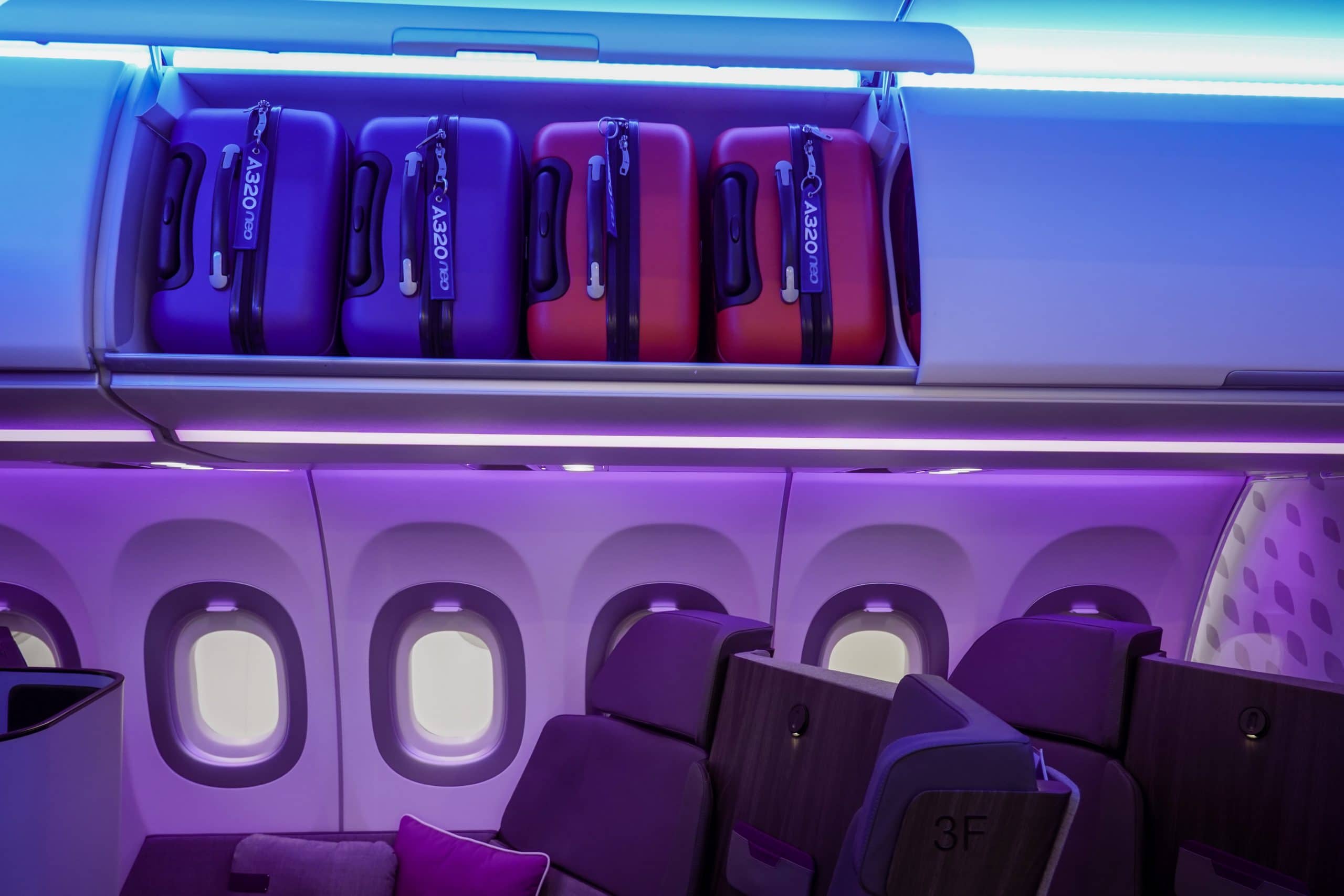Let me drop this bombshell on you right off the bat – if you've ever been squeezed into an airline seat like a sardine in a can, you know how critical it is to understand what's up with the overhead bin size on Frontier Airlines. This ain't just about fitting your carry-on; it's about preserving your sanity when you're 30,000 feet in the air. So, buckle up because we're diving deep into the world of Frontier's overhead bins, and trust me, you're gonna want to stick around for this ride.
Now, you might be thinking, "Why should I care about some measly overhead bin dimensions?" Well, my friend, here's the deal: Frontier Airlines is notorious for its strict baggage policies, and if you don't play your cards right, you could end up paying through the nose or watching helplessly as your prized carry-on gets checked against your will. And nobody wants that, right?
So, let's get real for a sec. This article isn't just about numbers and measurements; it's about empowering you with the knowledge you need to travel smarter, not harder. Whether you're a frequent flyer or a newbie just figuring out the ropes, by the time you finish reading this, you'll be a certified overhead bin expert. And who knows? You might even impress your fellow passengers with your newfound wisdom.
Read also:Wire Cast The Ultimate Solution For Seamless Live Streaming
What's the Big Deal About Frontier Overhead Bin Size Anyway?
Alright, let's break it down. Frontier Airlines, like many budget carriers, has a pretty specific set of rules when it comes to carry-on luggage. Their overhead bins are designed to accommodate standard-sized carry-ons, but there's a catch – not all carry-ons are created equal. The official dimensions for Frontier's overhead bins hover around 17.5 inches wide, 11.5 inches tall, and 13.5 inches deep. Yeah, it's a tight squeeze, but we'll get into that later.
Here's the kicker: if your bag doesn't fit within these dimensions, you're looking at a hefty fee for checking it in. And let's be real – nobody wants to shell out extra cash when they're already pinching pennies to fly budget-friendly. So, understanding the nuances of Frontier's overhead bin size is crucial if you want to avoid any unpleasant surprises at the gate.
Understanding the Basics: Carry-On vs. Personal Item
Before we dive headfirst into the world of overhead bins, let's clear up a common misconception. Frontier Airlines allows passengers to bring two types of carry-on items: a carry-on bag and a personal item. The carry-on bag is what we're talking about here – the one that needs to fit in the overhead bin. The personal item, on the other hand, is usually a purse, laptop bag, or small backpack that fits under the seat in front of you.
Now, here's where things get interesting. While the carry-on bag has specific size restrictions, the personal item is a bit more flexible. But don't let that fool you – if your personal item is too bulky, you might still run into trouble trying to squeeze it into the limited space available. So, it's always a good idea to plan ahead and pack smart.
Why Size Matters: The Science Behind Overhead Bin Dimensions
Ever wondered why airlines are so particular about overhead bin dimensions? It's not just about maximizing space; it's about safety, too. Those bins are engineered to hold a specific weight and size limit to ensure they don't pop open mid-flight and send your belongings flying through the cabin. Yeah, nobody wants that kind of chaos at 35,000 feet.
Plus, let's not forget about the economics of it all. Airlines like Frontier are all about efficiency, and having standardized overhead bin sizes helps them optimize the number of passengers they can fit on each flight. So, while it might seem like a hassle, there's actually a method to the madness.
Read also:Who Is Aaron Rodgers The Ultimate Guide To The Nfl Legend
Cracking the Code: Measuring Your Carry-On
Now that we've established why overhead bin size matters, let's talk about how to measure your carry-on to ensure it fits the bill. First things first – grab a tape measure or a ruler and get ready to do some measuring. You'll want to measure the length, width, and height of your bag, including any wheels, handles, or pockets that stick out.
Here's a quick checklist to help you out:
- Length: Measure from one end of the bag to the other, including any protruding parts.
- Width: Measure across the bag at its widest point.
- Height: Measure from the bottom of the bag to the top, including the handle and wheels.
Once you've got your measurements, compare them to Frontier's official carry-on size limits. If your bag fits within the 17.5 x 11.5 x 13.5-inch range, you're good to go. But if it's even a smidge too big, you might want to consider swapping it out for something more compact.
Tips and Tricks for Packing Smarter
Packing smart is all about maximizing space while staying within the airline's size restrictions. Here are a few pro tips to help you get the most out of your carry-on:
- Roll your clothes instead of folding them – this reduces wrinkles and saves space.
- Use packing cubes to organize your belongings and make the most of every nook and cranny.
- Wear your bulkiest items on the plane – think jackets, sneakers, or bulky sweaters.
And remember, less is more. You don't need to bring your entire wardrobe – stick to versatile pieces that can be mixed and matched.
Dealing with the Gate Check Dilemma
Let's face it – even if you've done everything by the book, there's still a chance your carry-on might not fit in the overhead bin, especially on a full flight. That's where the gate check comes in. If the bins are full and your bag doesn't fit, Frontier might ask you to gate check it. Don't panic – it's not the end of the world.
Here's what you need to know about gate checking:
- Your bag will be tagged and loaded onto the plane at the gate.
- You'll get it back as soon as you disembark at your destination.
- Make sure to remove any valuables or fragile items before handing it over.
And hey, if you're worried about extra fees, don't sweat it – gate checking is usually free on Frontier flights.
How to Avoid Gate Checking Altogether
If the thought of gate checking gives you anxiety, there are a few things you can do to increase your chances of keeping your carry-on with you:
- Board early – premium seats or early boarding passes can give you first dibs on overhead space.
- Choose a bag that fits snugly under the seat in front of you if you're traveling with just a personal item.
- Be prepared to rearrange your belongings on the fly – sometimes a quick shuffle can make all the difference.
And remember, a little charm can go a long way. If you're polite and patient, the flight attendants might just find a spot for your bag, even if it seems like there's no room left.
Exploring Alternatives: Checked Baggage vs. Carry-On
Let's be real – sometimes the hassle of fitting your carry-on into an overcrowded overhead bin just isn't worth it. If you're traveling with a lot of stuff or prefer the peace of mind that comes with checking your luggage, that's a perfectly valid option. Here's what you need to know about checked baggage on Frontier Airlines:
Checked baggage fees vary depending on your fare type and travel itinerary. Basic fares typically come with a checked bag fee, while higher-tier fares might include a free checked bag as part of the package. It's always a good idea to check the specifics of your fare before booking your flight.
And here's a pro tip – if you're a frequent flyer, consider signing up for Frontier's loyalty program. Members often enjoy perks like discounted checked baggage fees or even free checked bags on select flights.
Weighing the Pros and Cons
When deciding between checked baggage and carry-on, it's all about weighing the pros and cons:
- Checked baggage: More space for your stuff, but potential delays or lost luggage.
- Carry-on: Convenience and peace of mind, but limited space and potential gate check fees.
Ultimately, the choice comes down to your personal preferences and travel needs. Some people swear by carry-ons, while others prefer the flexibility of checked baggage. Either way, knowing your options is key to making the best decision for your trip.
Real-Life Examples: Travelers Share Their Stories
Let's hear from some real-life travelers who've dealt with the Frontier overhead bin size conundrum. Sarah, a frequent flyer from Denver, shared her experience: "I learned the hard way that not all carry-ons are created equal. My bag was just a smidge too big, and I ended up paying a hefty fee to check it in. Now, I always measure my bag before packing."
Meanwhile, John from Chicago had a different take: "I don't stress about overhead bins. If my bag doesn't fit, I just gate check it. It's free, and it saves me the hassle of wrestling with my luggage on a crowded flight."
These stories highlight the importance of planning ahead and knowing your options. Whether you're a meticulous planner or a go-with-the-flow traveler, there's a strategy that works for you.
Data and Statistics: The Numbers Don't Lie
According to a recent study by the International Air Transport Association (IATA), carry-on baggage accounts for nearly 60% of all checked luggage on domestic flights. That's a lot of bags vying for limited overhead space! And with airlines like Frontier focusing on maximizing efficiency, it's no surprise that overhead bin size has become such a hot topic.
So, what does this mean for you? Simply put, the competition for overhead space is fierce, and being prepared can make all the difference in your travel experience.
Final Thoughts: Mastering the Frontier Overhead Bin Game
Let's recap, shall we? Understanding Frontier's overhead bin size isn't just about avoiding fees; it's about ensuring a smooth, stress-free travel experience. By knowing the dimensions, packing smart, and being flexible, you can navigate the sometimes tricky world of carry-on luggage with confidence.
So, what's next? Take action! Measure your carry-on, brush up on Frontier's baggage policies, and don't be afraid to ask questions if you're unsure about anything. And hey, if you found this article helpful, drop a comment or share it with your fellow travelers. Let's spread the knowledge and make flying a little less stressful for everyone.
And remember, whether you're flying Frontier or any other airline, knowledge is power. Stay informed, stay flexible, and most importantly, stay cool under pressure. Happy travels, my friend!
Table of Contents
- What's the Big Deal About Frontier Overhead Bin Size Anyway?
- Understanding the Basics: Carry-On vs. Personal Item
- Why Size Matters: The Science Behind Overhead Bin Dimensions
- Cracking the Code: Measuring Your Carry-On
- Tips and Tricks for Packing Smarter
- Dealing with the Gate Check Dilemma
- How to Avoid Gate Checking Altogether
- Exploring Alternatives: Checked Baggage vs. Carry-On
- Real-Life Examples: Travelers Share Their Stories
- Data and Statistics: The Numbers Don't Lie


